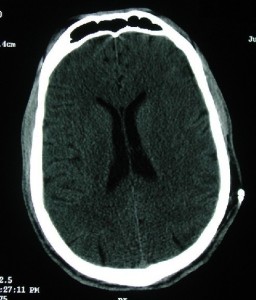Patient 1, Society 0
 by Danielle Ofri
by Danielle Ofri
New York Times
A young, healthy patient called me recently requesting a CT scan of his head because of his headaches. He described his symptoms, and they sounded to me like migraines. His clinical picture was not suggestive of a brain tumor and I told him so, but he was persistent. “What if I’m the one 35-year-old who drops dead of a brain tumor while you try to figure out what’s wrong?†he asked.
It’s a tough spot to be in. Sure, there was a chance that his symptoms were being caused by a brain tumor. The chance was exceedingly small, but not zero.
If I did a CT scan for every one of my many patients with headache, I might pick up an otherwise unsuspected tumor in one of out of thousands of them. For that one patient, it would be valuable. For the many more who would have side effects from the scan — from the contrast dye or radiation, or from false positive results leading to yet more tests — it would be harmful. And when finite health care dollars get shifted to unnecessary tests — well, we all lose out eventually.
A highlighted the possible damage of radiation from excessive medical testing. Researchers estimated that 29,000 extra cancers could be caused from one year’s worth of CT scans. The radiation from potentially unnecessary mammograms has also raised red flags.
Then, of course, there is also the cost of all this testing — a cost that threatens to bankrupt the health care system and the American economy.
“Being able to say no is the heart of the issue,†a health economics researcher said when interviewed by The New York Times about that study.
He is right, of course. So much of decision-making in medicine is in the hands of individual physicians, and it is theoretically in our power to limit unnecessary procedures. But this can create a conflict between what is good for an individual patient and what is good for the health of the entire population.
But can we be a doctor to society? Except for public health doctors, most of us practice medicine in a cocooned environment: one patient with one doctor in one room. We want to do the greater good for society, but this can be abstract, frustrating and time-consuming in a real world with real patients. It may conflict with what is right for the individual. Plus, every doctor knows that you’ll rarely be sued by “society,†but you certainly can be sued by an individual patient. It’s nearly impossible to toe the public-health line when faced with a frightened — or litigious — patient.
Sure, I could possibly justify a CT scan for this particular patient, depending on how I worded my request. Besides — the thinking usually goes — what’s the risk or cost of one extra CT scan in the grand scheme of things?
Approaching medicine on the individual level, there probably isn’t much added risk or cost. But approaching medicine from the societal level, the effect is huge.
I spoke to my patient for a long time, explaining why I did not think a CT scan was necessary, given his particular symptoms. I discussed the downsides of such scans, but he would have none of it. It was clear that he would never be able to rest easy until he had a CT.
I finally broke down and ordered the scan, but had mixed feelings about it. It wasn’t incorrect to order it, but it probably wasn’t necessary.
The patient turned out to be upset that the scan could not be done immediately — after all, he was worried about a brain tumor killing him on the spot. This was where I had to take a stand. Yes, the scan was potentially justifiable, but given his clinical presentation, I could not justify calling it “emergent†and asking the radiologists to defer other patients scheduled for scans.
In the end, the patient trooped off to the emergency room — the fastest but most expensive and, ultimately, least efficient way to obtain medical care. He learned he did not have a brain tumor and was able to sleep comfortably that night. Score one for the patient, but the rest of us lose out. (From the New York Times)
